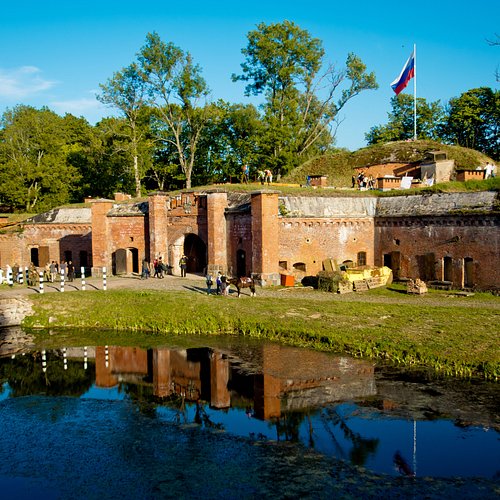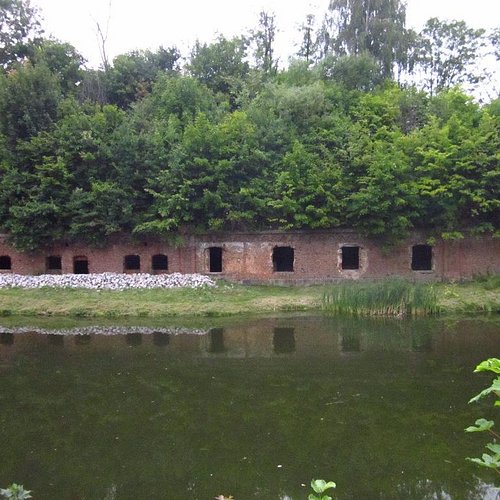Top 10 Historic Sites in Kaliningrad, Northwestern District
A little extra chunk of Russia stuck between Lithuania and Poland on the Baltic Sea, Kaliningrad was known as Königsberg from its founding by the Teutonic Knights in the 13th century until after World War II. It was renamed, repopulated with Russians and became part of the Soviet Union. Today, as it has been for centuries, it’s known for amber products, with most of the world’s harvestable amber still lying off its coast. The 14th century Königsberg Cathedral is a main city attraction.
Restaurants in Kaliningrad
1. Fort XI Donhoff
Overall Ratings
5.0 based on 280 reviews
Fort XI Donhoff is the fortified structure built in 1877-1882. It is one of 12 forts composing the outer fortification ring of former Fortress Koenigsberg previously called "Night feather-bed of Konigsberg". In the end of the Second World War on April 7, 1945 the garrison located in Fort XI capitulated practically without fight. On this reason it is the most undisturbed and well-preserved fort among other Kaliningrad forts. Nowadays guests visiting Fort XI Donhoff have possibility to touch pure history and see with their own eyes the part of Koenigsberg defensive system that existed before 1945. There are such interesting exhibits and objects as original German gate, iron spiral staircases, barracks corridors, an observation post, the operating lifting mechanism for a raising of ammunition, etc. Now it is under the management of a private company that preserves its identity and develops the fort as a museum, touristic, cultural and artisan center.
2. Brandenburg Gate
Overall Ratings
4.5 based on 146 reviews
Reviewed By robert-not-home
One of the old city gates and well maintained and restored. These gates are somewhat of a highlight of the city and part of the Kaliningrad experience.
3. Holy Cross Cathedral
4. The Church of Queen Luisa
5. The church Juditen
6. Fort #5 King Fredric-Wilhelm the Third
Overall Ratings
4.5 based on 386 reviews
Reviewed By anthonyjJ692NJ
As with all my reviews of this area, I would urge potential visitors to learn some Russian or, at least familiarise yourself with the alphabet. If you dont, not only will you struggle to get anything done but you will miss out on so much. This Fort is reached by bus numbers 8 and 36 or trolley bus 2, from Leninskiy Prospect Its 20 roubles flat for all bus journeys within the city i.e. cheap enough to get on and off at your leisure. If there are daily travelcards available then I am not aware of them so keep plenty of 10 rouble coins available as handing notes to the conductors (yes they still have them and they are all female), is likely to upset them and you would not want to upset a Russian bus conductor. As the bus heads out of the city, keep you eyes peeled for the sign for the fort (pictured). It is literally at the city limits so if you are still on the bus when its hits countryside then get off and head back. Its 150 roubles to go into the fort (everything here is 150 or 300 roubles to get in!). The fort is a maze of tunnels with various displays, all in Russian, and a fascinating collection of propaganda posters. Walking on the "island" that seats the fort, you will find that it is still being vigorously defended by mosquitoes (Summer 2017), and standing still to take a photograph is enough to encourage an attack so be prepared. There are loudspeakers dotted about playing melancholy songs from the war and various armaments lined up along the moat. This is not the best preserved Fort as that honour belongs to Fort No. 11, which surrendered without a fight in 1945. However, Fort 11 is only reachable by taxi or a lot of walking so if you want to see a fort, this is probably your best bet.










